Reviews 13 min read
A sporty new twist on the e-tron
The e-tron Sportback joins the UK line‐up alongside the original e‐tron SUV but is its Coupé-inspired design and sporting bias worth the extra money?
Discover EV expert verdict...
- Coupé design with (almost) SUV space
- Smooth and quiet
- High quality interior
- Expensive compared to rivals
- Jaguar I-PACE handles better
- Less space than the Audi e-tron
Overview
The Sportback is the second model in Audi’s e-tron product line. It’s based on the same mechanical platform, shares the same electric motor and tech-filled classy interior, but manages to combines the comfort of a luxury SUV with sleeker sportier styling. It’s beautifully built and a capable family car with useable range, but is the compromise when it comes to practicality worth the visual appeal and higher price tag?
Driving
The drivetrain, as previously mentioned, is borrowed from the e-tron, and at the moment there are two battery options providing varying power and range. The 55 quattro (with a 95kWh battery), and the model we were testing, offers 350bhp and 413.8lb-ft (or 396bhp and 489.7lb-ft for limited periods of up to eight seconds in Boost mode accessed by slotting the gear selector into S), propelling it from 0-62mph in 6.6 seconds (or 5.7) and will keep going until it reaches 124mph. Below it sits the entry-level 50 quattro (with a 71kWh battery) offering customers a smaller output of 304bhp and 398lb-ft of torque (with a 0-62mph time of 6.8 seconds and top speed of 118mph) and a smaller range of 188 miles (compared to 241). It can only charge at up to 120kW but achieves an identical charge status as the 55 variant in the same time (more on that later).
With all of the heaviest components concentrated in the centre of the vehicle, it has close to 50:50 weight distribution, meaning it will handle better than most SUVs. The S line Sportback we had on test (and the most popular trim accounting for circa. 60 per cent sales) benefits from sport suspension based on the adaptive air set-up that is standard for all models and has the ability to vary ride height by up to 76 millimetres for optimal cruising comfort and absorbency. The driver can influence the settings of the adaptive air suspension with a choice of seven profiles, including: offroad (how many owners are actually going to do this?), allroad, auto, efficiency, dynamic (the best mode for optimum handling), individual and comfort (additional Range mode sits outside of Drive Select).
The Jaguar I-PACE is the better drive when it comes to B road blasts but the e-tron Sportback is more refined in terms of road and wind noise and it’s certainly more comfortable than the Tesla Model X and Mercedes EQC. Its steering feels naturally weighted but it was a little too vague for our liking. While we like the seating position which is higher than in the I-PACE rear vision is very restricted by the sloping roof line and small back window, and the virtual mirrors (see comfort and practicality section) which were fitted to our car were more of a hindrance than help!
Now for the techy stuff, for Audi has a lot of it! The e-tron Sportback offers all-wheel drive, and can continuously regulate the ideal drive torque distribution between both axles within fractions of a second. Most of the time it relies exclusively on its rear electric motor for offer optimum efficiency, but if you request more output than it can provide, the front unit is activated. This also happens predictively when traction breaks in poor conditions or when sensors detect understeer or oversteer during more committed driving.
When braking from speeds of up to 62, the Audi e-tron Sportback can recuperate a maximum of 221 lb-ft and 291bhp, which amounts to more than 70 per cent of its output and more than any other production model. Overall, it attains up to 30 per cent of its range through recuperation. The traditional brakes come into play only at deceleration forces greater than 0.3g, and depending on the situation, the control system decides individually for each axle whether the SUV coupé recuperates using just the electric motors, the brakes, or a combination of both. Unfortunately we found the brakes quite grabby (and noisy) – just a gentle stab felt like you were slamming on the anchors.
During deceleration actions of up to 0.3g, which applies to over 90 per cent of everyday driving in case you didn’t know, the battery is charged by the electric motors, primarily by the rear electric motor, which act as generators in these situations. The recuperation system provides for variable regulation of energy recuperation between electric modules - both in coasting mode when the driver releases the right-hand pedal as well as during braking.
Range and running costs
The Sportback has a range of 241 miles and a claimed combined electric power consumption of 26-21.9 kWh/100 km. During our week with it (largely driving on b roads, through towns and the odd dual carriageway) – despite the fact that within the first few miles of any journey we would rapidly lose range – it would always even itself out by the end so that we were achieving the upper end of that figure (2.4 mile/kWh) in efficiency mode. It was a different story in the other modes, with energy consumption hovering around the 2.4 mile/kWh mark.
The recuperation system helps to make these figures as realistically achievable as possible by offering three levels of energy recuperation available both in coasting mode and during braking as we’ve just touched on. In addition, the highly flexible thermal management, which enables rapid DC charging, a long battery life cycle and reproducible performance even under heavy loads, utilises a heat pump that harnesses waste heat from the battery, and can use up to 3kW of actual power losses for heating and air conditioning. Depending on the outside temperature, it can boost the range by up to 10 per cent
It can charge at up to 150kW and takes just under half an hour for the battery to reach 80 per cent of its capacity, while charging times at up to 11kW takes nine hours to reach 100 per cent or 14 hours via a 7kW home wall box. As an option for the next model year (MY22) a second on-board charger will be available and can double the charging speeds to 22kW charging.
It’s no Tesla network, but Audi’s e-tron Charging Service, provides access to almost 120,000 (a number that is continuously rising) public charging points in 21 European countries – all you need is single card to start the process. Better still, at Ionity high-power charging stations your car will authorise itself and automatically unlock the charging station.
Now let’s come to that price tag of £79,185 for our test car (without options) – a lot of money right, but it is only £1335 more expensive than the equivalent e-tron, so if that’s the trim and battery option you want you’ve just got to decide what styling you prefer. The upside is that it will cost you a trifling amount to run compared with a petrol or diesel alternative, its exempt from the London Congestion Charge and other low-emission zones, car tax is free and company car owners enjoy extremely low benefit-in-kind (BIK) tax bills for the next few years.
Where we don’t see people opting for the Sportback is when you take the basic model, with prices starting from £68,385 compared to £59,885 for the e-tron S line 50 quattro variant. That makes us question the point of this car and who would buy it. Interestingly, Audi is forecasting a sales mix of around 66 per cent for the e-tron SUV and 33 per cent for the Sportback, so they realise it won’t be as popular but with the SUV body style apparently the fastest growing sector, it wants a piece of the pie.
Design
The e-tron Sportback combines the roomy interior dimensions of an SUV, the sloping roofline and shortened rear end of a fastback coupe and a hatchback boot. It’s Audi’s fancy name for big, luxurious four-door vehicle, but it also serves a functional purpose in that its body shape (when you opt for the virtual exterior mirrors) is more aerodynamic. In fact, the Sportback reaches a drag coefficient of just 0.25, compared to its boxier Audi e-tron sister model which is rated at 0.27 – and that translates to an improvement of six miles in the Quattro variants. Every mile counts in an EV!
There are a total of nine paint finishes and the wheel arch trims and sills are finished in matt anthracite while the underbody protection and sporty diffuser (which now stretches across the entire width of the vehicle) are painted black to help give it an off-road look. The logo on the electric charging flap is in orange which can also be applied to the brake calipers as an £425 option.
Our test model was the S line, which plays on what Audi call the sporting DNA of the e-tron Sportback, so privacy glass and larger 21 inch wheels come as standard, together with more aggressively styled and aerodynamically efficient front and rear bumpers, rear diffuser and boot lip spoiler, together with a gloss black roof frame, aluminium window trims and privacy glass. In contrast to the basic model, the wheel arch trims, door sills, bumpers and exterior mirrors are body colour-coded. There are also S line emblems and illuminated aluminium door sill trims.
Inside, it’s all very similar to the Audi E-tron. Our test car featured electrically adjustable and S-embossed heated front sport seats upholstered in Valcona leather, with faux hide for the upper section of the dashboard, door armrests and lower portion of the centre console. Dark matt brushed aluminium inlays and black glass-look operating buttons (with haptic feedback) lend the cabin a sophisticated feel.
The instrument panel with its two touch displays is angled towards the driver, and when deactivated, the upper of these blends almost invisibly into the large gloss-black surround which is pretty cool. On the upper 10.1 inch touch screen, the driver controls the infotainment, telephony, navigation and dedicated e-tron settings. The lower 8.6 inch display is used to input text and to operate the convenience functions and climate control. The menu structure is intuitive and responsive and the graphics are clear and condensed – we liked how it asked us if we wanted to see parking options when we got near our end destination. The driver can also activate a host of functions with voice control.
Comfort and practicality
There are three different trim levels (S line, Launch Edition and Vorsprung) but the Sportback is well-specified as standard and includes the 12.3 inch Audi virtual cockpit, which can be switched between two views (an optional £150 ‘plus’ version features an additional display centred around the power meter, and can be expanded upon to include a head-up display), MMI Navigation Plus with MMI touch which includes those two aforementioned screens, Audi Sound system with 10 loudspeakers (including subwoofer and amplifier), DAB digital radio, wireless charging, two Bluetooth connections, four USB ports and two-zone climate control. There are also a host of comprehensive driver assistance systems (low-speed automatic emergency braking, lane departure warning, cruise control system, Parking System plus with 360° display, rear-view camera, Keyless Go with Remote Central Locking and power operated tailgate) and, of course, a wide range of optional equipment and key technology packs starting from £1225. Our test car for example had over ten grand’s worth of options.
With the myAudi app you can manage all charging processes remotely and on long-distance trips, the e-tron route planner displays the necessary charging stops along the route and will continuously update based on the traffic situation and driving behaviour. Another function of the myAudi app is preheating/precooling prior to departure, and with the £825 optional deluxe auxiliary air conditioning system you can specify whether you want the interior, the steering wheel and the seats heated. An optional digital Audi connect key will allow you to lock and unlock the car, but also to start the motor.
Audi’s headline news for this car, besides its power and range are its innovative digital matrix LED headlights – a worldwide first in a production vehicle. It works by breaking down the light into minute pixels so it can illuminate the road in high resolution but can also be controlled with exceptional precision. The technology is also used in many video projectors and at its heart is a small chip containing one million micromirrors, each of whose edge length measures just a few hundredths of a millimetre and with the help of electrostatic fields, each individual micromirror can be tilted up to 5000 times per second. Depending on where you are, the LED light is either directed via the lenses onto the road or is absorbed in order to mask out areas of the light beam.
The optional virtual exterior mirrors, which integrate small cameras, capture images that appear on OLED displays between the instrument panel and the door. If the driver moves their finger toward the surface of the touch display, symbols are activated with which the driver can reposition the image. The mirrors also adjust automatically to three driving situations (on the motorway, during turning and parking manoeuvres). The trouble is they’re a solution to a problem no one wanted fixing – tech for tech’s sake! They’re positioned too low and feel very unnatural, and the screens themselves display less than what you’d see in a traditional door mirror – definitely not worth £1250! Also just think of the number of times you’ve had to deal with a smashed door mirror… We’d dread to think how much it would cost to repair one of these things! In comparison we did like the highly practical illuminated seat buckles but they are a £475 option as you also get rear side airbags thrown in.
There’s ample space for five occupants but with rear headroom 20 millimetres less than in the e-tron those over six foot may be little cramped. Sadly there’s no option of seven seats, which is where the Model X has the big advantage. There is a 60 litre stowage compartment underneath the bonnet which won’t take a carry on suitcase but does at least house the vehicle tool kit and charging cable, and 615 litres of boot space (45 litres less compared to the e-tron but bigger than the Model X with 357 litres and the EQC with 500), which increases to 1665 litres with the rear seats folded down.
Verdict
Whether you opt for the sleeker 55 quattro S line Sportback over the equivalent e-tron SUV will come down to personal taste, but how does it stack up against its main competitors? Well it’s more expensive than the Jaguar I-PACE EV400 HSE (£74,395) and Mercedes-Benz EQC 400 AMG Line (67,715) but cheaper than the five-seater Tesla Model X Long Range (£82,980). Just bear in mind in normal mode it’s slower and has less range than all of its rivals and bar the I-PACE it also has the lowest residual value of 43 per cent (after 36 months/60,000 miles) with the Model X boasting 51 per cent and the EQC 44 per cent. Unless you’re an ardent Audi fan, we’d go for the Tesla, because what it lacks in eye-catching design and build quality it makes up for in range and an easy-to-use, quick and widespread charging network, otherwise we’d save over £12k and go for the Mercedes.
Key Specs
2020 Audi e-tron Sportback 55 quattro S line
Price (RRP OTR): £79,185 (including PiCG); model tested £89,470
Top speed: 124mph
0-62mph: 6.6 seconds; 5.7 in boost
Power: 350bhp; 396bhp in boost
Torque: 413.8lb-ft (561Nm); 489.7lb-ft (664Nm) in boost
Driving range: 241 miles
Power consumption: 26-21.9 kWh/100km
Charging time: 30 minutes or 50 minutes (150kW DC charging to 80% or 100%); 8.9hrs (up to 11kW to 100%); 14 hours (7kW home wall box to 100%)
Insurance group: 48-50
Vehicle warranty: 3 years or 60,000 miles
Battery warranty: 8 years or 100,000 miles

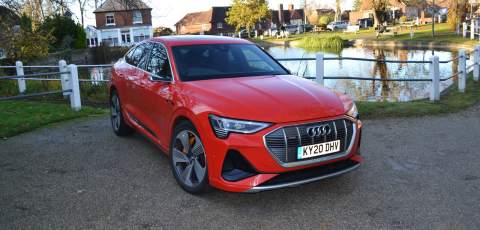


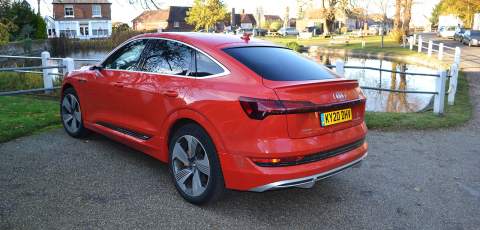
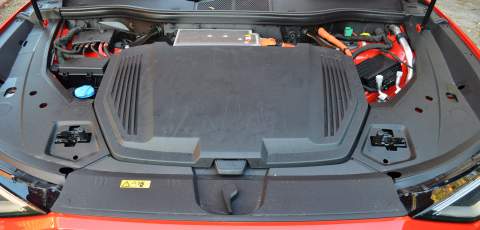
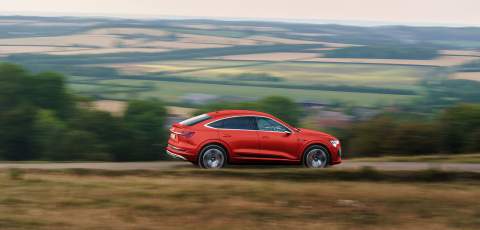
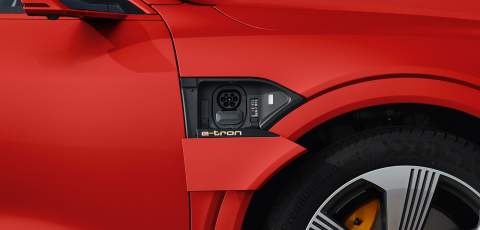
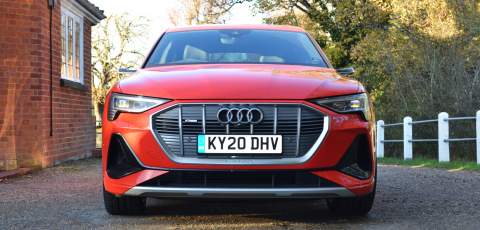
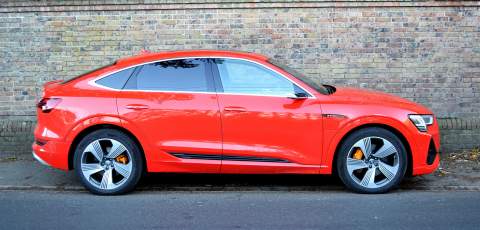
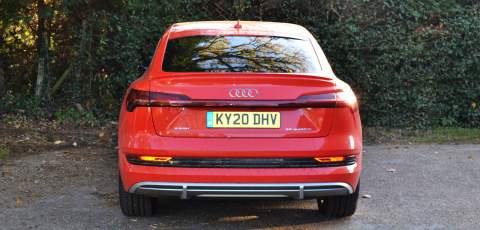
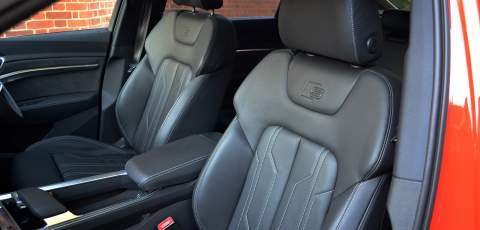
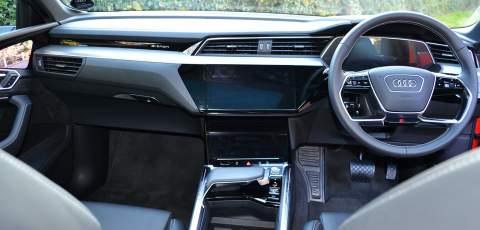
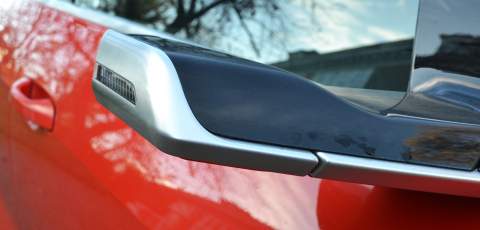
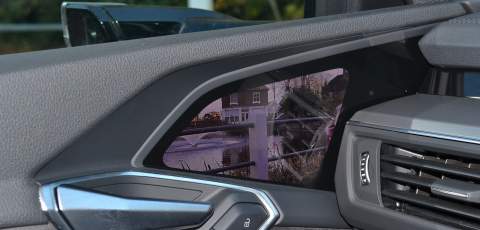
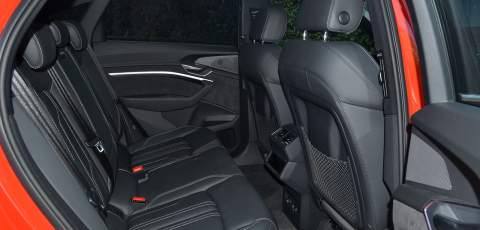
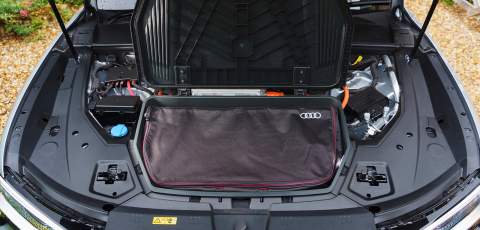
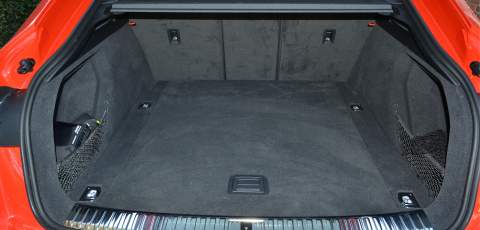


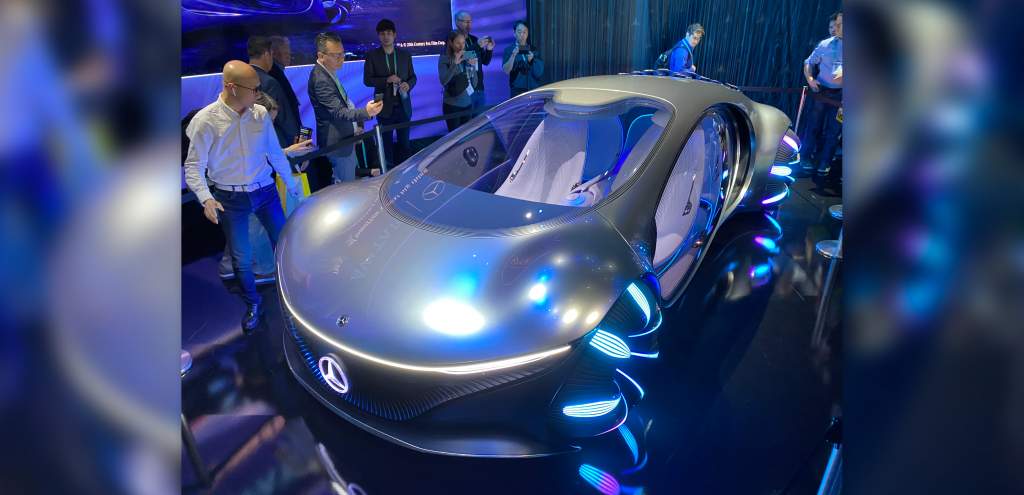
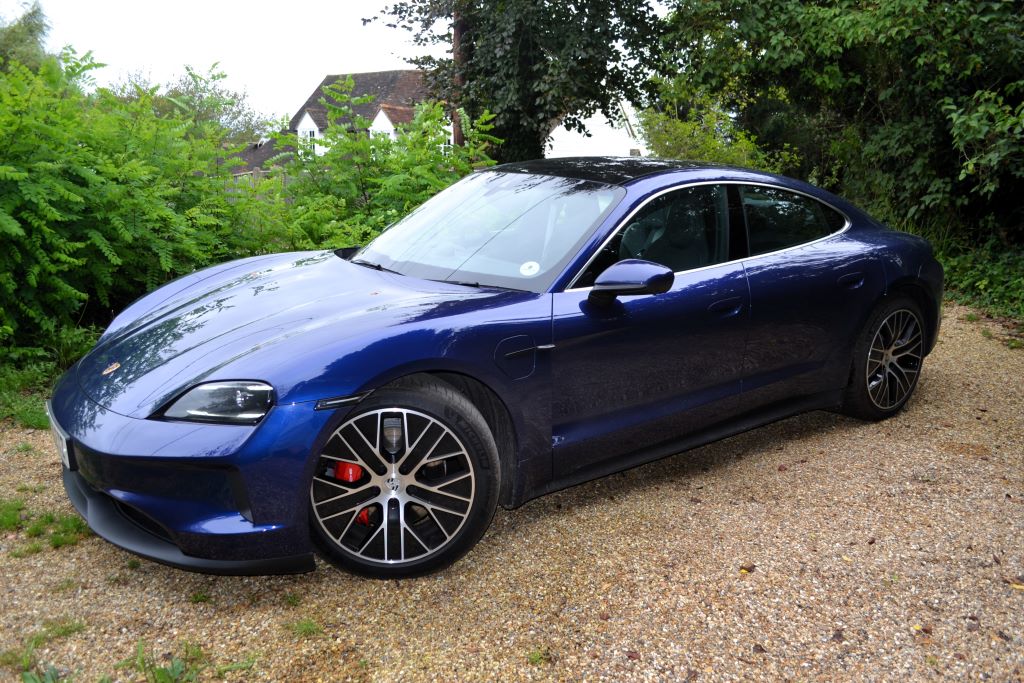
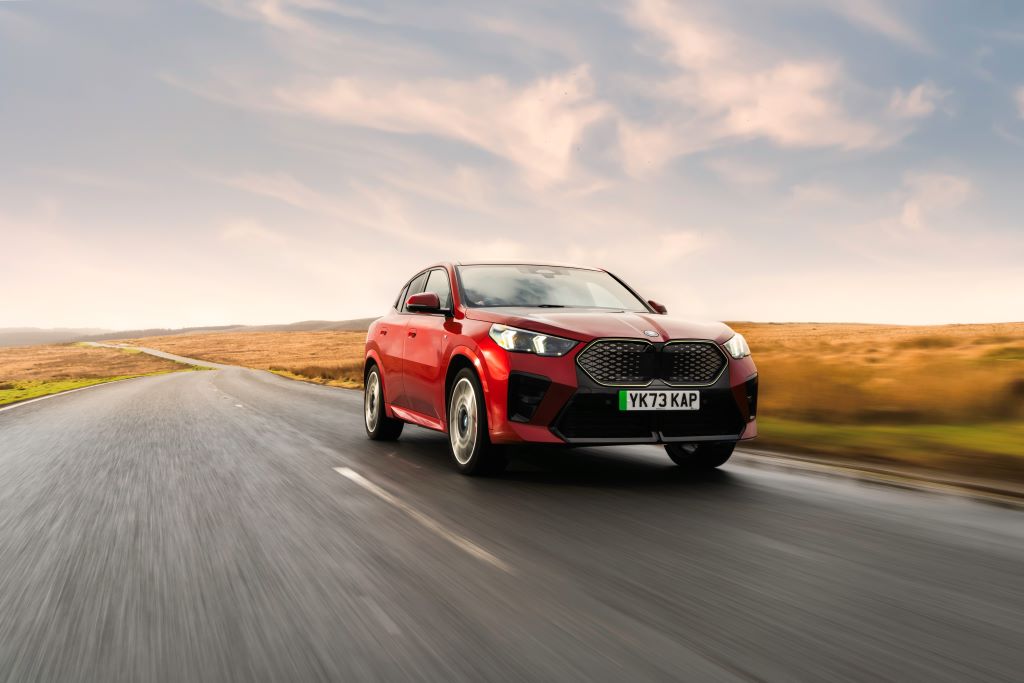
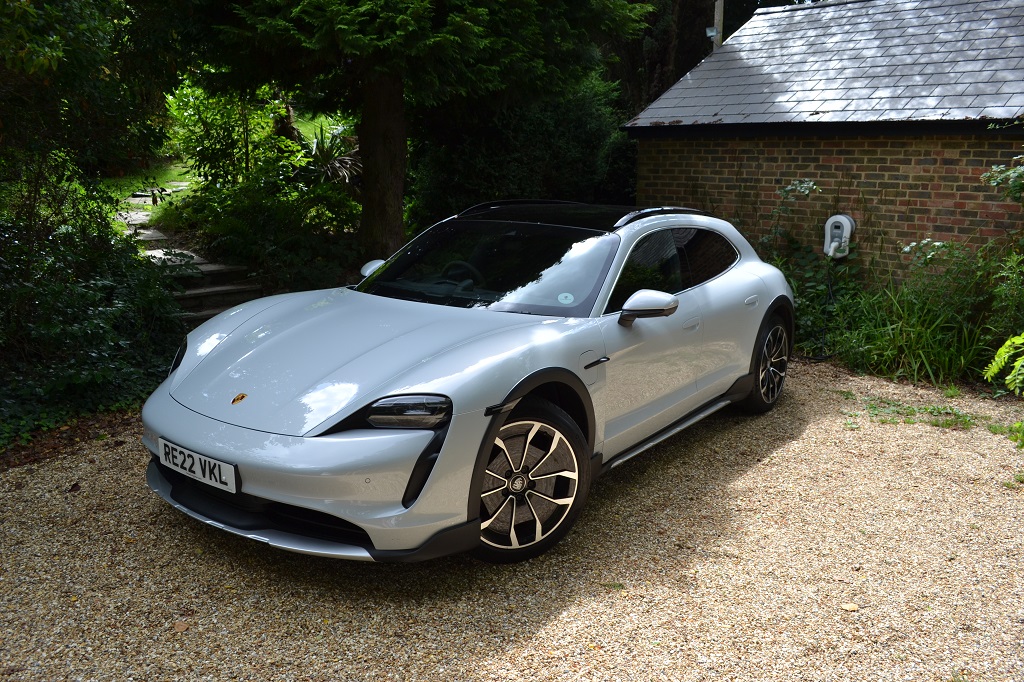
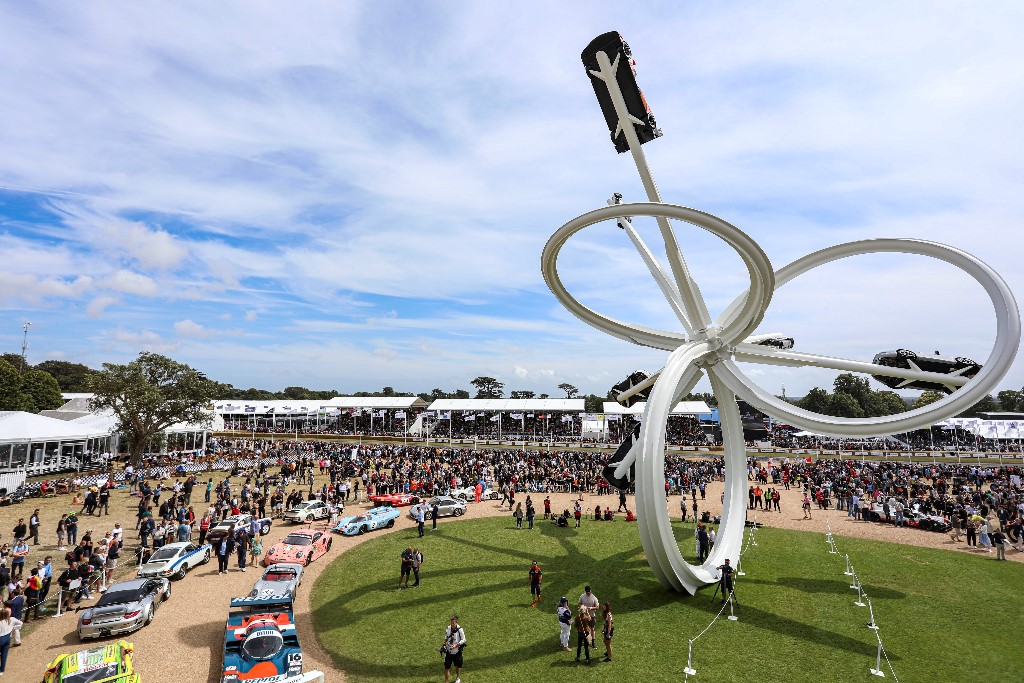
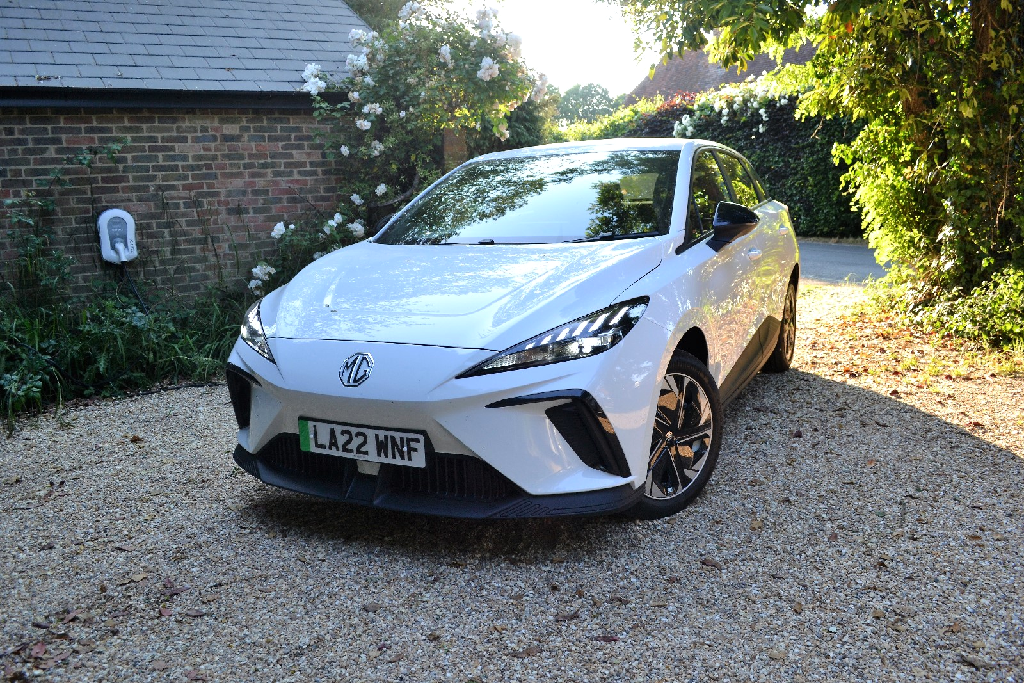

Comments (0)
Be the first to write a comment
Login/ Signup